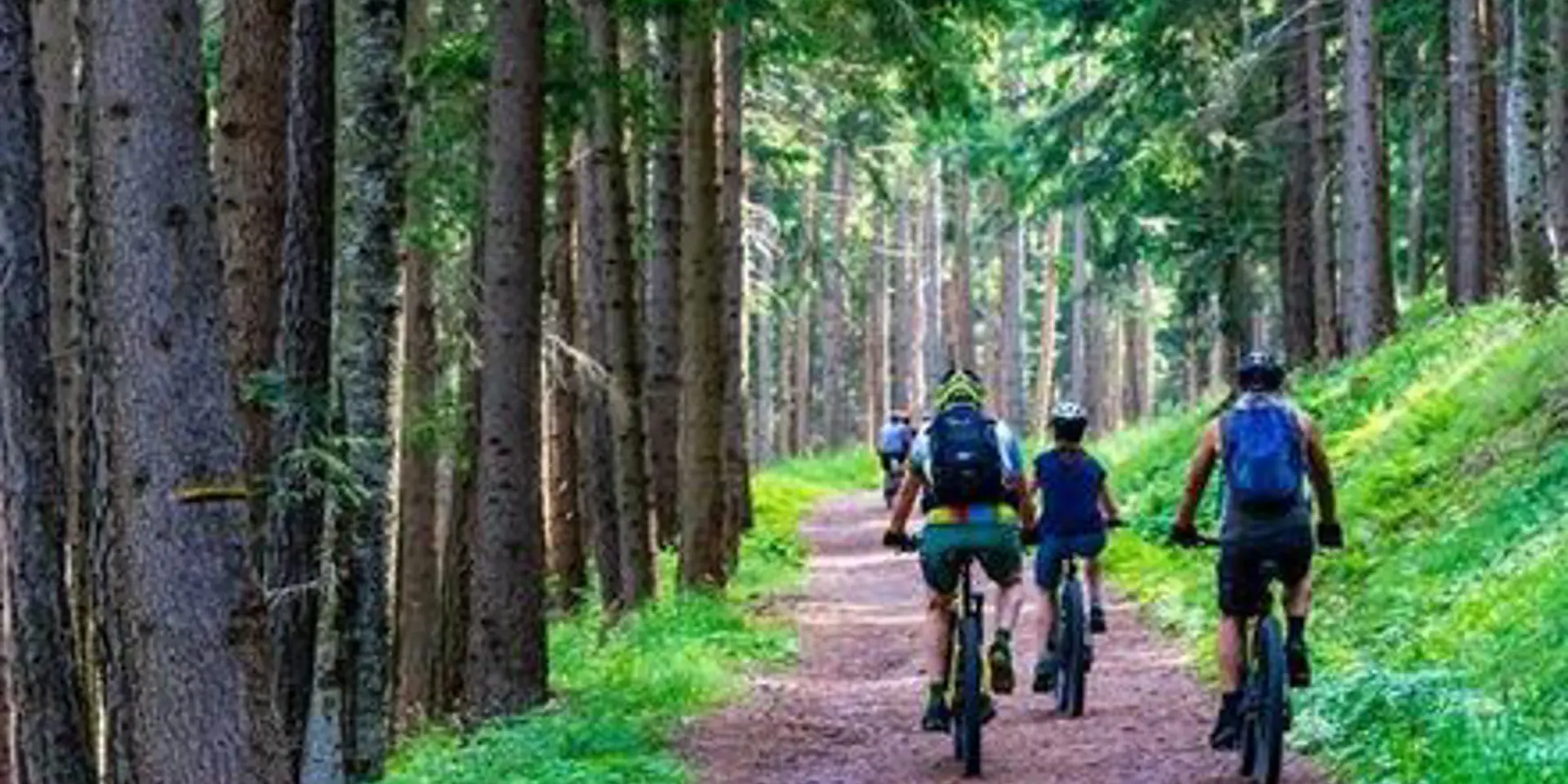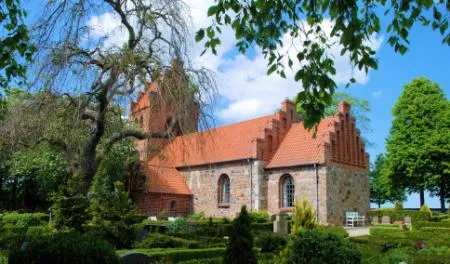Includes per person per night:
- Overnight accommodation
- Breakfast
- Take away lunch available at an extra charge.Please ask the hotel
Green Key approved
4.14430378584922 of 5 Stars

Includes per person per night:
Click the "See calendar and prices" button to choose dates and see the room selection.
See calendar and prices: Out in the forestSkjalm Hvide Hotel is close to sights and attractions of both Copenhagen and northern Zealand. The hotel is an ideal starting point for day trips and wonderful excursions. The beautifully appointed hotel with its newly and tastefully refurbished rooms is perfect for relaxation and recharging your batteries.
Bygaden 1, 3550 Slangerup
Show map

Includes per person per night:

Arrival every day except Sunday
Includes per person per night:

Includes per person per night:

3.75 km

4.24 km

6.11 km

6.21 km

7.38 km
J. F. Willumsen moves within naturalism, symbolism and expressionism, and with his strong and expressive colors can be said to have his very own style. He dealt with virtually all art media, including painting, sculpture, ceramics, graphics, photography and architecture, and his sense of colour, form and narrative runs like a red thread through all his works.
The museum is an explosion of color in all the colors of the rainbow - just enough to stimulate the senses of both children and adults. At the museum, the children have a positive encounter with the world of art, for example through family Sundays, creative events and exhibitions for children. Go up close to the many works together with the children and examine which materials are used, how they are used and how they differ from each other.
The museum was inaugurated in 1957 on the basis of a deed of gift from J.F. Willumsen himself, and the gift included both his own works in painting, sculpture and ceramics and his large, private art collection, Gamle Samling.
Willumsen's works as well as a selection of older works from his private collection form the permanent exhibitions at the Willumsens Museum.
The museum also has a long tradition of exciting special exhibitions, where contemporary artists in painting, sculpture and ceramics are invited to enter into a dialogue with Willumsen and his art.

7.88 km

11.73 km
Here you can experience sculptures of people, Greek gods and bronze animals. Misja lives and works both in Italy and Greece and is often home and exhibited in Denmark. As something new, he has created a sculpture park in his childhood town of Ølsted. Many of the works are for sale and there are smaller sculptures inside the inn at Ølsted Kro. The park is open all year from 9.00 to 21.00.

12.34 km
Explore one of Denmark's oldest castles with furnishings from the time of Frederik VII and Countess Danner.
Jægerspris Castle is a three-winged complex, the oldest part of which, the north wing, dates from the Middle Ages. For 600 years the castle was a hunting and summer residence for the Danish kings - from Valdemar the Victorious to Frederik VII. In 1854 the castle became the private residence of Frederik VII and Countess Danner.
In the museum you can see the rooms decorated by the fashionable and style-conscious Countess Danner, which have remained unchanged for over a hundred years. The castle is the only place in Denmark where you can experience the interior design of the 1850s in its entirety.
There are several memorials and burial mounds in the beautiful castle park, which is bordered by large woods with excellent walking trails.

12.42 km
(The North Forest)
The forest is mainly known for its old oaks: Kongeegen, Storkeegen og Snogegen (The King’s Oak, The Stork Oak and The Twisted Oak). It is owned by the King Frederik the VII's Foundation in Jægerspris, and cycling and walking are permitted in the forest. If you come by car, you can park by the church in the village of Skoven and follow the yellow-marked route through the forest. The route passes the Kongens Jagtpavillon (the King’s Hunting Lodge), then Bredvig Mose (a marsh), which gives you an idea of how the area looked in ancient times. The route then passes the ancient oaks and you finally arrive back at the car park.
Forest maps can be purchased at Rejsestalden Jægerspris and at Jægerspris Castle.

13.87 km
Selsø was built in 1570 by the nobleman Jakob Ulfeldt dææ, who was one of the richest men in the kingdom.
The manor house was originally situated on an islet in a lake with a river connection to Roskilde Fjord, and before the present building lay a small medieval castle building.
The Ulfeldt family sold Selsø in 1624 and after changing owners, the manor house were bought by the noble lady Berte Skeel in 1682.
When she died without any heirs, her nephews and nieces took over her wealthy house.
Christian Ludvig von Plessen rebuilt Selsø into its current Baroque form. Only the outer walls and the basement vaults are left from Uldfeldt's Renaissance house. The interiors were decorated according to all the rules of art with painted and marbled panels, painted floors and paintings by Hendrick Krock, the time-favored artist, who has also decorated at Rosenborg, Fredensborg and Frederiksberg Castles.
In 1801 Christian Ludwig's grandson and heir, Christian Ludvig Scheel Plessen, died. He had also not used Selsø, but his widow Agathe Johanne, born von Qualen, moved in and used Selsø as a single-family home until his death in 1829. In her time, the southern end of the house was redesigned in empire style with pearl gray panels and fine French , printed wallpaper.
When Agathe died, the house was abandoned and stood empty and forgotten until 1972 in utter decay. The rooms were emptied of furniture and were used for storing grain, hatching of pheasants, dog kennel, and for storing hives and drying of laundry for the workers. This use naturally created decay in the rooms, but at the same time helped to preserve the house, which (quite miraculously) was not demolished as so many other manor houses were in the late 1800s and early 1900s.
In 1972, the couple Bernhard Linder and Grethe Gunnar Nielsen rented the overdue main building and started to restore it carefully with the help of volunteers and in collaboration with, among others, the conservation department og The National Museum of Denmark. The following year, Selsø opened as a museum, and in 1995 the house was handed over to The Plessenske Selsø Foundation, whereby the museum became a self-governing institution run by funds from ticket revenues and subsidies from Frederikssund Municipality
There are parking facilities at Selsø Church.
It is possible to rent the castle's premises for events as well as advertising and film recordings. Contact Selsø Slot for information about this.

14.28 km
Frederiksborg is named after Danish king, Frederik II, who built the first castle on the site. But it was his son, Christian IV, who built the magnificent building we see today, the largest Renaissance castle in the Nordic region.
Find admission prices and opening hours at Frederiksborg Museum of National History
Frederiksborg Castle is home to the Museum of National History. Through paintings, portraits, furniture, and handicrafts from different stylistic periods, the museum tells the story of 500 years of Danish history.
On a tour through the castle's many beautiful halls, you will meet kings and queens, nobles and bourgeois, events and epochs that have all helped shape Denmark's development and history.
With changing exhibitions of Danish and international character, regular Sunday tours, and family activities during school holidays, the museum puts Danish history into perspective and keeps the dialogue with the past alive.
Events and exhibitions at Frederiksborg Museum of National History
Using publictransport.dk, you can find the easiest and quickest way to get to Frederiksborg Castle by public transport.
The Knight's Hall is located on the second floor above the castle church and is one of the highlights of the castle. It has been recreated as it was during Christian IV's time and is splendidly furnished so that you can vividly imagine the royal feasts of the past with pomp and splendor.
Look up, for the ceiling is lavishly carved and painted with great detail that is worth studying closely. Beautiful tapestries and portraits of the Glücksburg royal family hang on the walls, one of the newest being Niels Strøbæk's painting of three generations: Queen Margrethe, Crown Prince Frederik, and Prince Christian.
In the Audience Chamber, high and low have been able to appear before the king since the 1680s. The Audience Chamber was spared in the devastating fire of 1859, and therefore you can experience a unique example of an original Baroque interior from Christian V's time. The Audience Chamber reopened in May 2016 after extensive restoration work over four years.
A curious detail in the Audience Chamber is the built-in elevator, which was installed in 1692 for Christian V. Using a pulley system, the king could be hoisted from the Audience Chamber in a chair and directly down to the Mint Gate, and discreetly leave the castle in a carriage.
Like the Audience Chamber, Frederiksborg Castle Church was largely spared from the destruction of the castle fire in 1859, so you can experience the castle church almost as it was when the absolute monarchs were anointed here.
Today, everyone has access to worship services and concerts in the historic space. From the gallery walkway at the top, where coat-of-arms of elephant knights and grand cross knights of the Order of Dannebrog are continuously hung, there is a fantastic view of the church space.
On the castle's third floor, Danish history is brought right up to the present day. Here you can see portraits, historical paintings, and furniture from the 20th and 21st centuries, including portraits of politicians, sports stars, musicians, writers, and other cultural personalities. The rooms are simple and provide a contemporary backdrop for modern portrait art.
Also read: 7 Things to Experience at and Around Frederiksborg Castle
Frederik II laid the foundation when he acquired the Hillerødsholm manor in 1560 and built the first version of Frederiksborg.
His son, Christian IV, who was born and grew up in the castle, had greater ambitions: Between 1600-1620, he demolished his father's castle and erected the much larger and beautiful Renaissance castle that we can see today. The castle is an expression of Christian IV's position as a powerful European monarch in his time, built to impress Europe's kings and princes, and no expense was spared.
Royals lived in Frederiksborg until the end of the 18th century, after which the castle was considered outdated. However, Frederik VII brought new life to Frederiksborg in the mid-1800s when he moved in with Louise Rasmussen, Countess Danner.
The couple modernized the castle with several fireplaces and stoves to heat the large rooms, but it turned out to be catastrophic: One of the heat sources ignited the great castle fire in 1859, which burned out most of the interior. Only the Castle Church and the Audience Hall survived the fire.
During the reconstruction, the royal family no longer wanted to live in the castle. Carlsberg's founder, brewer J.C. Jacobsen, suggested creating a museum of national history in the magnificent setting and offered to finance it. The Museum of National History at Frederiksborg was founded in 1878 and has since been an independent part of the Carlsberg Foundation.
Find all necessary information to plan your visit to Frederiksborg Castle. Read about opening hours, admission, parking, accessibility, transport, photography, museum shop at Frederiksborg Castle.
The Museum of National History recommends that you buy your entrance ticket before your visit.
Buy your ticket to Frederiksborg Castle